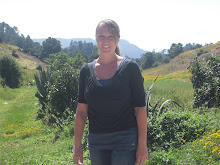
Oaxaca has one juvenile detention facility for the entire state. This was a shock to me, coming from Los Angeles where there are at least 24 juvenile detention facilities within the County alone. Moreover, there are currently only 26 youth (25 young men and 1 young woman) who are currently incarcerated in Oaxaca’s juvenile hall. I immediately wondered if the reason for so few incarcerated youth was that they are sent to adult facilities. However, I have come to learn that unlike California, Oaxaca does not incarcerate juveniles with adults under any circumstances… There are actually only 26 youth under the age of 18 who are detained in the entire state of Oaxaca.
This may be due to the state’s reliance on alternative approaches such as mediation and restorative justice to respond to juvenile crime. There are likely other factors at play here as well, although I do not yet know enough to explore this topic in detail. I suspect that many people who are victims of crime do not report incidents to law enforcement due to a lack of trust. Nonetheless, the numbers are intriguing.
I went on the tour of the juvenile hall this week. I was impressed with the services that are provided to the incarcerated youth, as well as with the culture of the institution. During the tour, I met various employees and observed their interactions with the youth. An overall attitude of caring and respect was apparent.
Each week the staff develop an individualized plan of daily activities for each young person, based upon their specific needs and interests. Vocational classroom activities include carpentry, electrical work, a bakery, and a class where the youth learn a traditional art form using sheet metal. (The metallic rose pictured above was made by one of the youth in this art class). There is also a computer lab, a library, a gym, outdoor recreational facilities, a cafeteria, and educational options ranging from basic literacy to university classes. The center has 4 psychologists on staff who provide psychological services to the youth. In addition, the medical ward includes a doctor and a dentist. The wide variety of vocational classes, as well as the very low staff to youth ratio, are a luxury by Los Angeles standards. This is ironic given that L.A. has more economic resources than does Oaxaca, one of the poorest states in Mexico.
The director of the center informed me that there is a 0% recidivism rate, if we calculate recidivism based on the commission of a new offense. He acknowledges that some youth have returned because they have failed to comply with the equivalent of probation or parole conditions, such as attending school or participating in community service. But over the past two years that the facility has been in operation, no one who has been released has been arrested for committing a new crime. This too is shocking to me given that recidivism rates in California tend to be between 60% and 90%, depending on the facility and how the rate is measured. This is particularly impressive because Oaxaca only incarcerates youth for the most serious offenses, such as homicide, rape, kidnapping, and bank robbery.
How do they have such success? The facility’s director credits using empathy, respect, and setting appropriate boundaries with the youth. He also values offering vocational opportunities that the youth are interested in to provide them with skills, and to keep them busy. I would add that the staff to youth ratio, which is around 1:1 by my calculations, must help quite a bit.
A local prosecutor who has visited a Los Angeles juvenile hall told me today that although the buildings of the Los Angels facility may be nicer, it was missing the element of humanity that is present in Oaxaca’s facility. Although this is ironic in a country where torture is a very real problem entrenched in the criminal justice system, it rings true with what I saw. Sometimes the best practices are simple – treat people with humanity, empathy, and respect. Provide individual attention, psychological support, and educational opportunities.
It may seem simple, but it seems to work.



